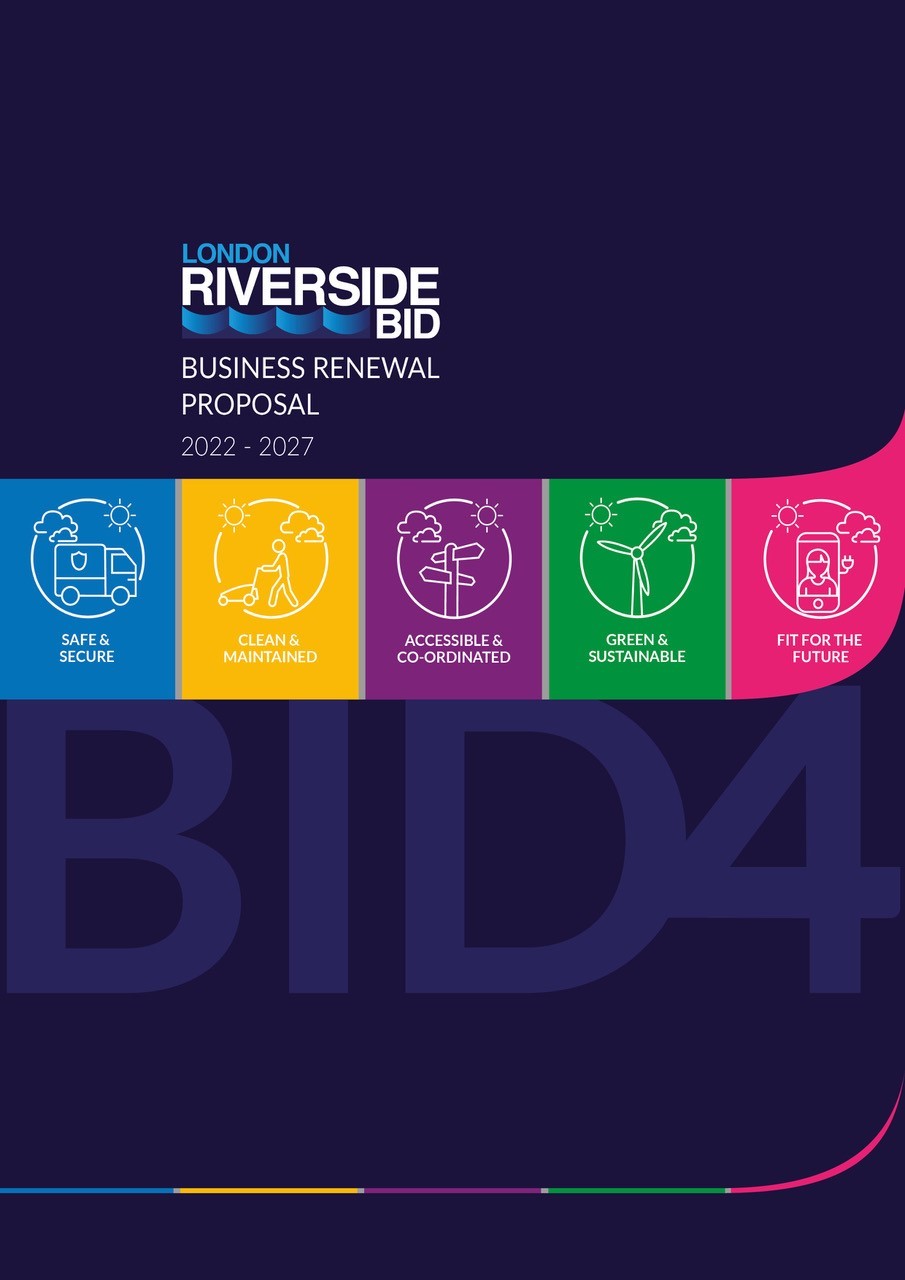FAQs: What is a Business Improvement District?

Business Improvement Districts (BIDs) and an overivew of London's BIDs
by Olga Astaniotis, 23 July 2018
What is a BID
A Business Improvement District (BID) is a geographical area in which the local businesses have voted, via a formal ballot, to invest together to improve their environment. Amongst those who vote, the ballot must result in at least a 51% majority in favour of the BID going ahead/renewing, and the hereditament value of the yes vote must also exceed 51%. The ballot takes place every 5 years.
Whilst BIDs are more commonly formed in retail areas, they are also in industrial zones such as here at London Riverside in Rainham, and in mixed use commercial areas. They work alongside local authorities to enhance an area’s economic prospects and to make it a better place to run a business and work. Where there is a strategic and cooperative relationship betweenthe BID and the Local Authgority, the presence of a BID can be valuable leverage in securing additional investment and influencing local economic policies. BIDs are, and should be, a positive force for regeneration and provide substantial benefits to businesses.
Who pays the BID levy?
The person or organisation liable to pay the non-domestic rates for the property is liable to pay the BID levy, which is mandatory for all businesses in the defined area. Where a property is occupied this will be the occupier. For empty properties the person or organisation entitled to occupy the property is liable to pay; this will normally be the leaseholder or the owner.
What does a BID do?
BIDs provide additional or improved services, identified by the local businesses, over and above what the Local Authority is legally required to provide. Some BID area are modest in size and so have limited resources, but in many places, especially retail centres and high streets, the additional funds can be sizeable. Activities range from extra security measures to substantial marketing and place-making campaigns designed to completely transform an area.
Here at London Riverside BID we invest BID levies primarily in our 5 Core Pillars of:
 |  |  |  |  |
The benefits of BIDs
BIDs are business-led organisations and so approach their task from a private sector perspective to balance and compliment public sector priorities
BID levy money is ring-fenced for use only in the BID area and businesses decide and direct what they want for the area
BID activity should result in measurable benefits, such as:
- reduced crime
- better accessibility and marketing of an area
- joint procurement initiatives
- reduced insurance premiums
- an improved environment for the workforce
- the ability to speak with one voice with local councils, Transport for London, the police and other public bodies
- increased footfall into an area and so more sales
- networking opportunities with neighbouring businesses
BIDs in London
There are more than 50 BIDs across Greater London, with 61,000 firms located in BID areas, employing over 900,000 people and with a turnover of £356m.
London Riverside BID is the largest of the industrial business improvement districts, with just over 350 businesses in its catchment and is in its 3rd term.
You can see a map of London's BIDs bere
What businesses need most from the Mayor of London
To protect and stem the loss of employment space, especially industrial space, and ensure the right kinds of business premises are made available in the right locations for start-ups, early stage growth businesses and mature, growing businesses, in an environment that is green, pleasant and healthy
Continued infrastructure investment in assets such as transportation, roads, super-fast broadband and EV charging, so that London is fit for purpose, ensuring that as our population grows, staff and goods can be moved around safely and productively both physically and digitally
Appropriate investment in resources to improve levels of security across the capital, ensuring that crime against businesses is not overlooked
Housing and major developments that are delivered sensitively to minimise negative impact on congestion, air quality, access to green space and use of local resources and amenities, that respect businesses needs and do not create additional burdens
Central and Local Government investment that has the potential to benefit all businesses, not just a few selected "growth sectors".
